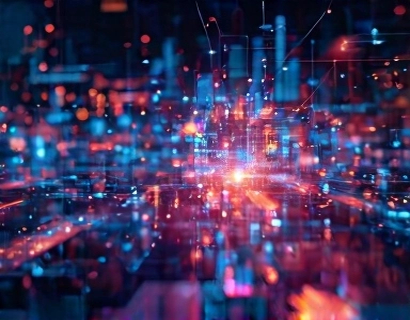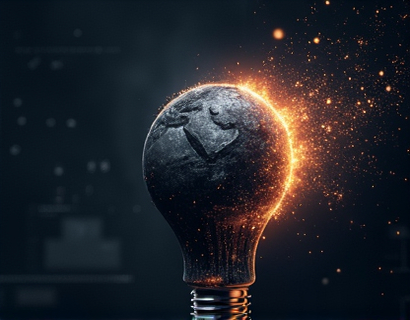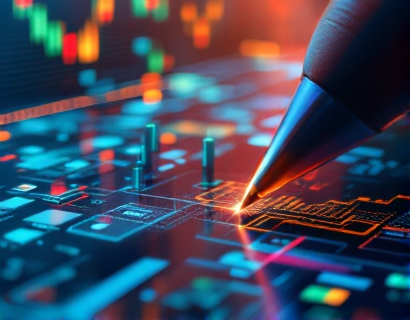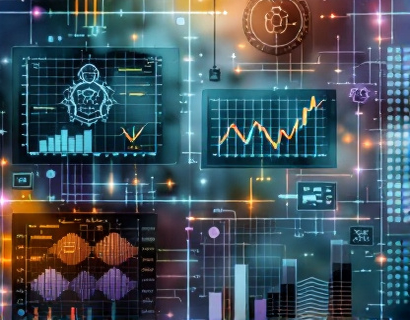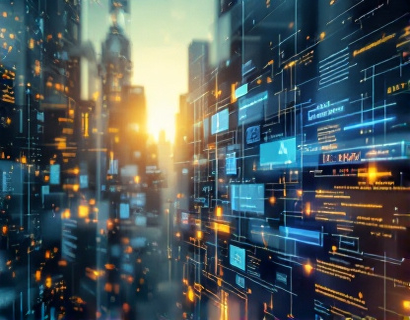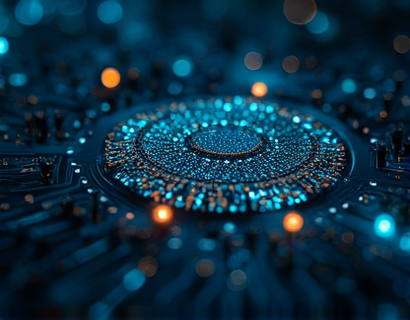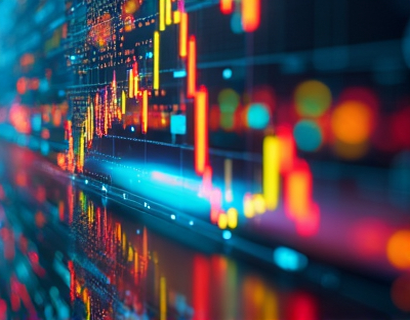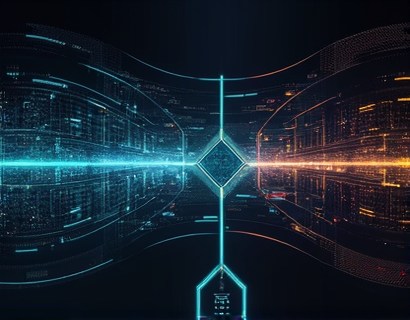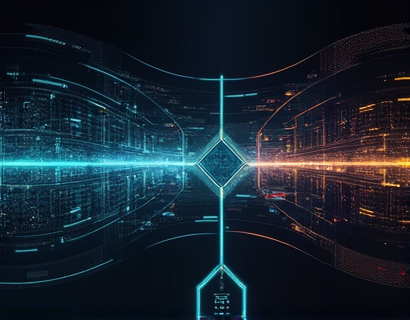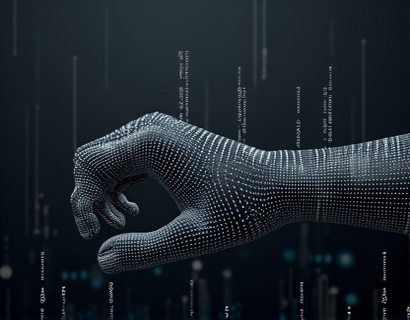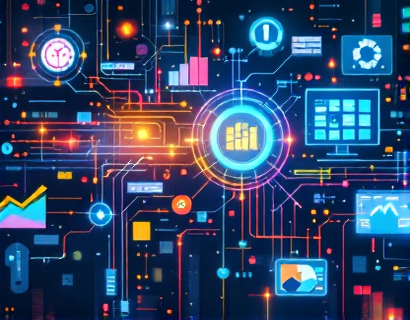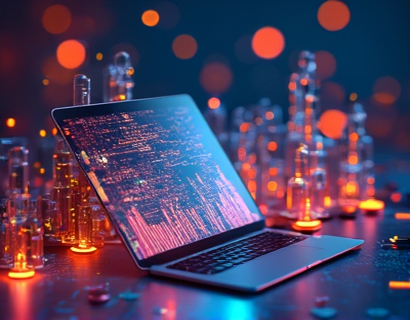Transforming Digital Experiences: The Synergy of AI and Crypto
The digital landscape is undergoing a profound transformation, driven by the convergence of artificial intelligence (AI) and blockchain technology. This synergy is redefining how we interact with digital services, creating more secure, efficient, and personalized experiences. For tech professionals and enthusiasts, understanding the intersection of AI, blockchain, and decentralized applications is crucial for navigating the future of digital innovation.
The integration of AI and blockchain is not just a technological curiosity but a powerful force that is reshaping industries across the board. From finance and healthcare to supply chain and entertainment, the impact is widespread. This article delves into the transformative impact of decentralized technologies on user interactions and growth opportunities, providing insights into the evolving tech landscape.
Understanding AI and Blockchain
Artificial intelligence, defined by its ability to simulate human intelligence processes such as learning and decision-making, has become an indispensable tool in modern technology. AI algorithms can analyze vast amounts of data, identify patterns, and make predictions with high accuracy. This capability is particularly valuable in enhancing user experiences by personalizing content, optimizing recommendations, and automating complex tasks.
Blockchain technology, on the other hand, is a decentralized ledger that ensures transparency, security, and immutability. By distributing data across a network of computers, blockchain eliminates the need for central authorities, reducing the risk of fraud and increasing trust. The combination of AI and blockchain leverages the strengths of both technologies, creating a powerful tool for digital transformation.
Decentralized Applications: The New Frontier
Decentralized applications (dApps) are at the forefront of this technological revolution. Unlike traditional applications that rely on centralized servers, dApps operate on blockchain networks, ensuring that data and control are distributed among users. This decentralization not only enhances security but also promotes user autonomy and privacy.
AI enhances dApps by providing intelligent functionalities that traditional dApps lack. For instance, AI-driven chatbots can offer real-time customer support, while machine learning algorithms can optimize resource allocation and improve user engagement. The synergy between AI and blockchain creates a new paradigm for digital services, where users have more control and benefits are maximized.
Enhancing User Interactions
The integration of AI and blockchain significantly improves user interactions in several ways. First, AI-powered personalization ensures that users receive content and services tailored to their preferences and behaviors. This level of customization enhances user satisfaction and engagement, leading to higher retention rates and increased loyalty.
Second, blockchain's transparency and immutability build trust between users and service providers. Users can verify transactions and interactions without relying on intermediaries, reducing friction and increasing confidence in digital platforms. AI can further enhance this trust by detecting and preventing fraudulent activities through advanced analytics and anomaly detection.
Third, AI-driven automation streamlines processes, making digital experiences more seamless and efficient. For example, smart contracts on blockchain can automate agreements and transactions, reducing the need for manual intervention. AI can optimize these smart contracts, ensuring they execute flawlessly and adapt to changing conditions.
Growth Opportunities in the Decentralized Economy
The decentralized economy presents numerous growth opportunities for businesses and individuals. By leveraging AI and blockchain, entities can tap into new markets, create innovative products, and establish robust ecosystems. Here are some key areas where this synergy is driving growth:
- Financial Services: Decentralized finance (DeFi) platforms use AI to offer sophisticated trading, lending, and investment solutions. These platforms provide greater access to financial services, especially in underserved regions, and reduce transaction costs.
- Supply Chain Management: Blockchain ensures transparency and traceability in supply chains, while AI optimizes logistics and inventory management. This combination reduces costs, improves efficiency, and enhances consumer trust.
- Healthcare: AI-driven analytics on blockchain can secure patient data and enable seamless sharing between healthcare providers. This improves diagnostic accuracy, treatment plans, and patient outcomes.
- Entertainment and Media: Decentralized platforms powered by AI can offer personalized content recommendations and secure monetization for creators. This model empowers content producers and enhances user experience.
These opportunities are not limited to established industries. Startups and innovators can leverage AI and blockchain to create disruptive solutions that challenge the status quo. The decentralized nature of these technologies lowers barriers to entry, allowing new players to compete on a level playing field.
Challenges and Considerations
While the potential of AI and blockchain is immense, there are challenges that need to be addressed. One of the primary concerns is scalability. Blockchain networks, particularly those using proof-of-work consensus mechanisms, can struggle with high transaction volumes. AI can help mitigate this by optimizing network performance and developing more efficient algorithms.
Another challenge is regulatory uncertainty. The decentralized nature of these technologies often falls into a gray area, leading to inconsistent regulations across jurisdictions. Businesses and developers must stay informed about regulatory developments and ensure compliance to avoid legal issues.
Security remains a critical issue, despite the inherent strengths of blockchain. AI can enhance security by identifying vulnerabilities and predicting potential attacks, but it also introduces new risks such as AI-driven cyberattacks. Continuous monitoring and robust security measures are essential.
Future Prospects
The future of AI and blockchain is bright, with ongoing research and development pushing the boundaries of what is possible. Here are some emerging trends and predictions:
First, the integration of AI and blockchain will lead to more sophisticated dApps with advanced functionalities. We can expect to see more intuitive user interfaces, enhanced security features, and seamless integration with existing systems.
Second, the rise of interoperability standards will enable different blockchain networks to communicate and work together more effectively. This will create a more connected and efficient decentralized ecosystem, fostering innovation and collaboration.
Third, the adoption of AI in blockchain governance and decision-making will become more prevalent. AI can help manage decentralized autonomous organizations (DAOs) by analyzing data, predicting outcomes, and optimizing strategies.
Lastly, the convergence of AI, blockchain, and other emerging technologies like the Internet of Things (IoT) will lead to the creation of smart environments. These environments will be highly responsive, secure, and personalized, transforming how we live and work.
Conclusion
The synergy between AI and blockchain is revolutionizing digital experiences, offering unprecedented opportunities for growth and innovation. By enhancing user interactions, creating decentralized applications, and addressing challenges through technological advancements, this partnership is shaping the future of the digital landscape. For tech professionals and enthusiasts, embracing this transformation is essential for staying ahead in an increasingly connected and intelligent world.





